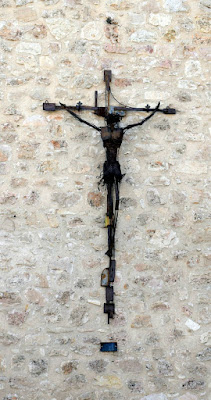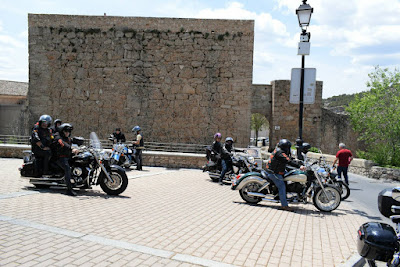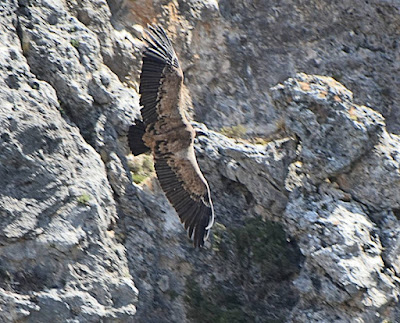Burgos was one day’s drive from Cuenca, and the campsite within walking distance of the old city. The campsite is pleasantly set in a park and this was our pitch.
The photo is somewhat misleading because each night the site is filled to capacity before 6:00 pm because it serves as a convenient overnight stay for those catching the Bilbao or Santander sea crossings.
Burgos is quite high up, about 3,000 ft, so quite cool at night – but cold enough for snow?
Not quite! It’s the
cotton-wool type seeds from the plane trees. So into Burgos without anymore
ado. This is the magnificent 11th Century gateway that leads into
the old town.
Straight into the
cathedral square, dominated of course by the 13th century cathedral
said to be one of the finest in Span.
Now cathedrals,
however magnificent, tend to merge into one another in blog descriptions. But
here’s something unique to Burgos – Papamosca’s clock. Papmosca’s job is to
ring the hours by hitting the bell, a mechanical wonder in the 16th
century when the clock was built and when awareness of precise time was only
just beginning. It even has minutes on the dial.
Of course, the magnificence and detail of the various gold leaf alterpieces is astounding, and the effort to create them unbelievable.
The gold threadwork
of the bishops robe is beautifully executed: that’s Jane’s judgement, which is
far more relevant than mine.
We noticed a large
painting on the wall, in front of the carved bishop’s feet: Christ taken from
the cross, lying in a heap on the bare earth wearing just a loincloth. It is
difficult to reconcile the image in that painting with the opulence being
displayed throughout the rest of the cathedral.
This is unusual, a
twin staircase straight out of a Fred Astaire Hollywood movie. A bit older than
Fred, though, built 1518 to 1523.
The ceiling here,
of which this is just a small part, is absolutely teeming with angels,
cherubim, seraphim etc. Looks like Heavenly League supporters pouring out of
the stadium after a match.
The whole cathedral
complex was decorated in great detail, certainly enhanced by restoration work.
That is an unresolved debate – how much do you restore old buildings before
they lose their authenticity. The entrance way shown below is a good example.
Quite a few pretty
houses around the cathedral square, but nothing like the numbers, or even the
feeling of antiquity as in the city of Cuenca.



















































